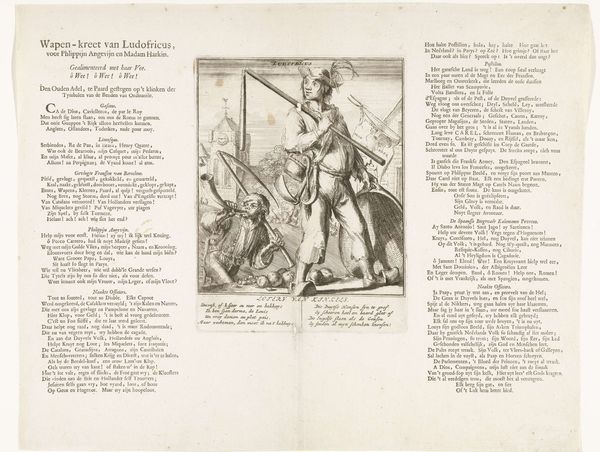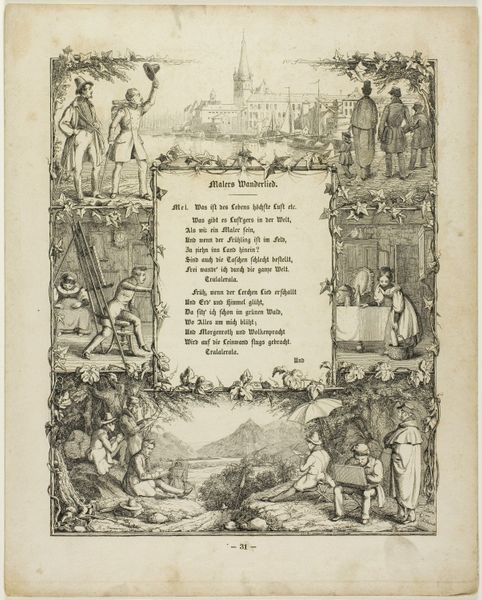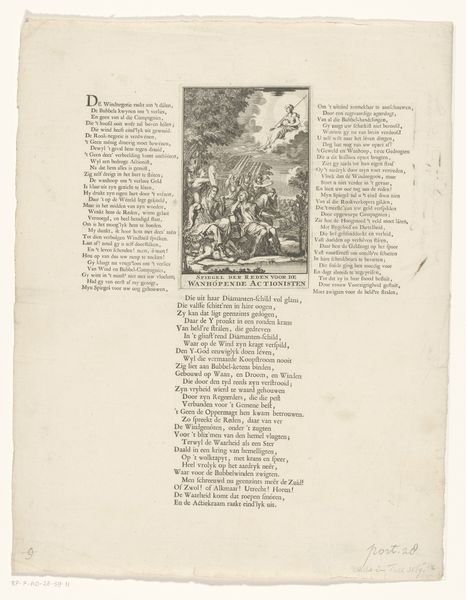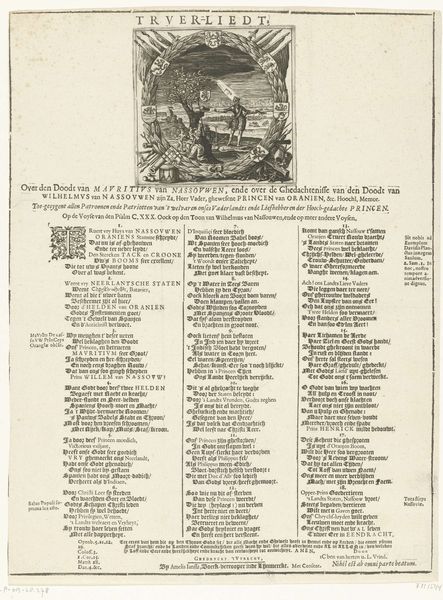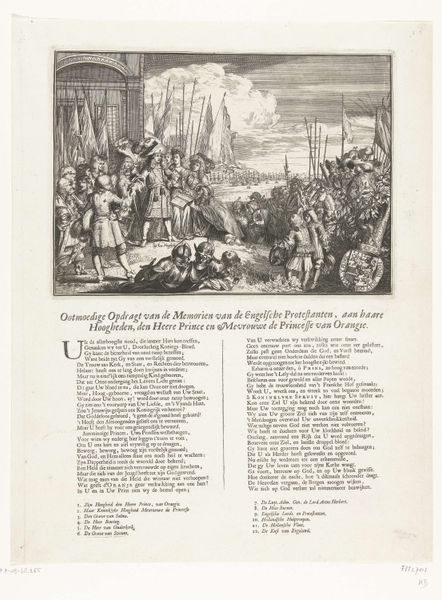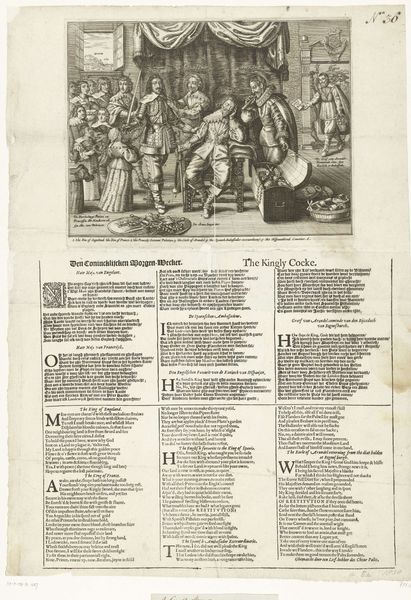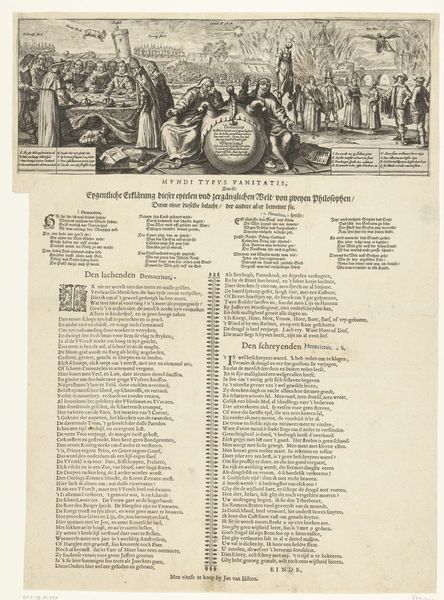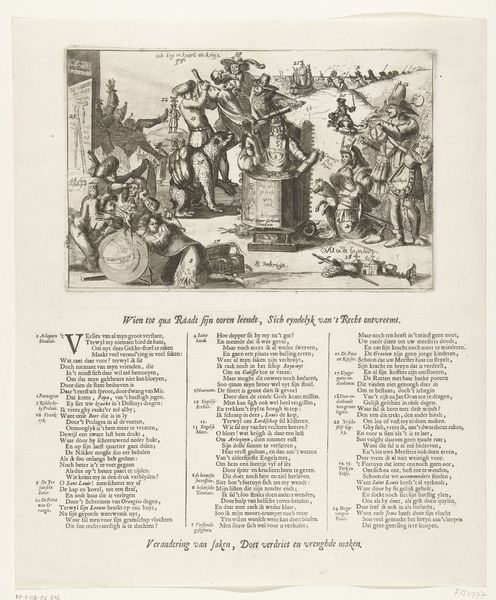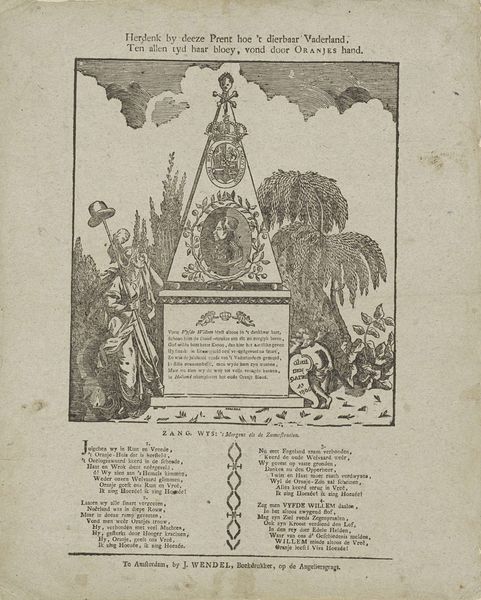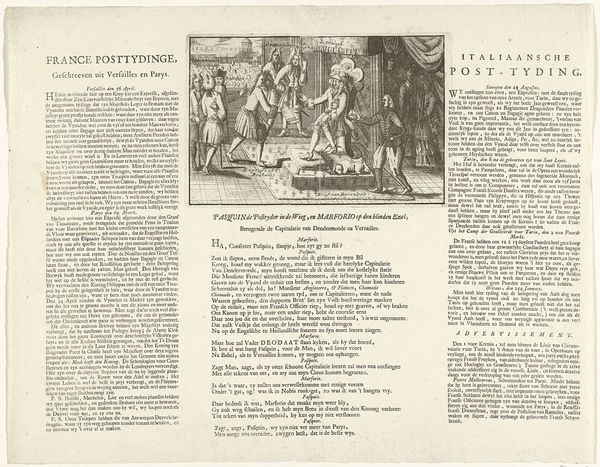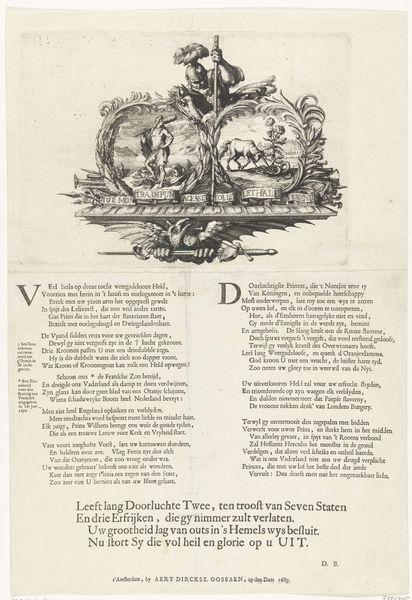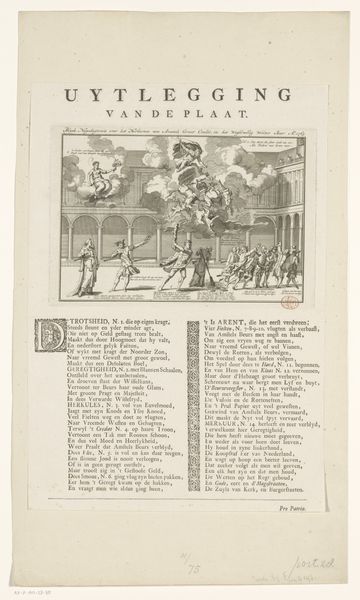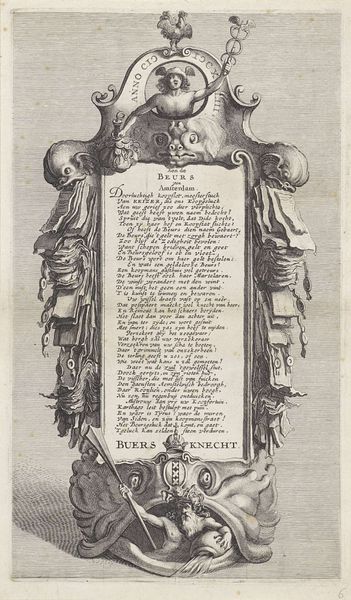
Spotprent op de verdeling van de Oostenrijkse landen door kardinaal Fleury, 1742 1742
0:00
0:00
Dimensions: height 496 mm, width 367 mm
Copyright: Rijks Museum: Open Domain
Curator: Here, in front of us, we have "Spotprent op de verdeling van de Oostenrijkse landen door kardinaal Fleury, 1742," created in 1742 by an anonymous artist. This print is held in the collection of the Rijksmuseum. Editor: My initial reaction? The stark contrast between the figures strikes me first. Some are draped in finery, while a central figure stands unclothed, vulnerable. It has an immediate and compelling visual impact. What a contrast! Curator: Indeed. The composition reveals a carefully constructed narrative, rife with political commentary. Observe Cardinal Fleury, the central figure orchestrating the division, cleverly suggested through this cast of characters positioned onstage. Editor: "Orchestrating" is a kind word for what appears as opportunistic land grabbing! I sense a mood of cynical resignation here. The players almost seem aware of the audience, trapped in this unfolding political theater. Curator: The choice to depict the partitioning as a theatrical performance invites interpretation, offering layers of understanding about performance and political maneuvering of the time. The characters' poses and costumes enhance its symbolic dimension. Editor: I find myself wondering about the reaction to this print at the time. Did it elicit outrage, knowing nods of agreement, or perhaps a weary sense of inevitability? To what degree was it impactful? Curator: We can presume a sophisticated, politically engaged audience appreciated its satirical barbs and recognized the real figures. I suspect its power lay in translating complex geopolitical struggles into a single, digestible, and darkly humorous image. Editor: It's a potent reminder of how artists can wield satire as a mirror to reflect the follies and hypocrisies of power. You've offered a clear analysis. Now, when considering those aesthetic and historical qualities, a dialogue can start with how visual art endures by provoking debate. Curator: A compelling point! I agree. It reminds us that the visual arts give a form of provocation beyond any moment in history.
Comments
No comments
Be the first to comment and join the conversation on the ultimate creative platform.
